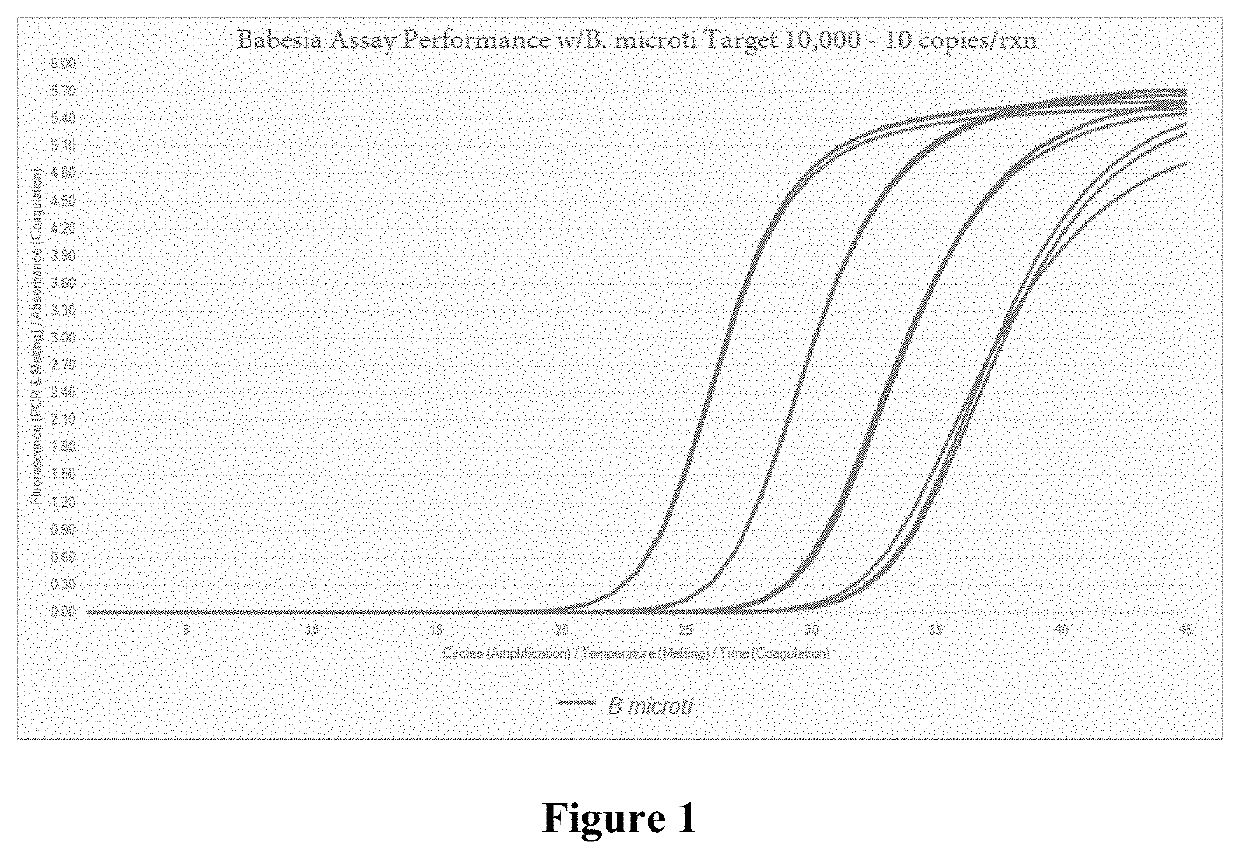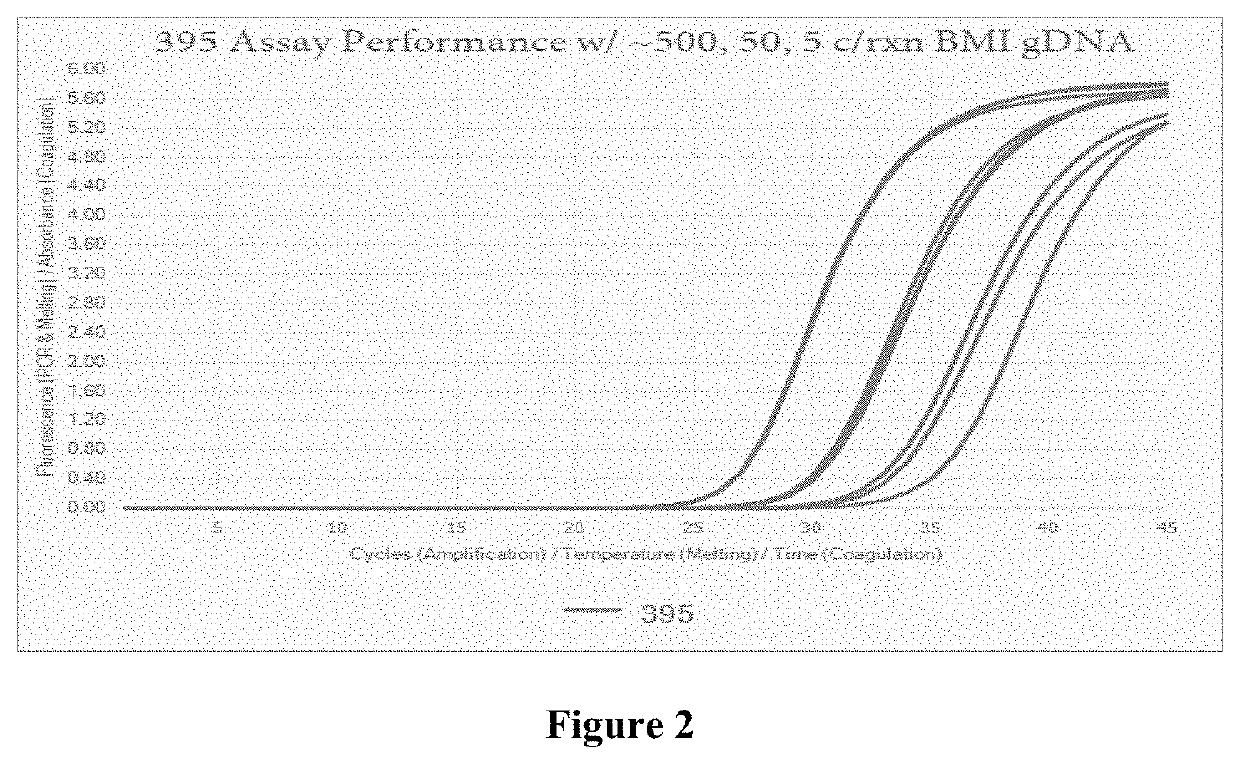Compositions and methods for detection of Babesia
a technology of babesia and composition, applied in the field of in vitro diagnostics, can solve the problems of no pathogen-reduction technology, weakened immune system, and particularly life-threatening patients with asplenia, and achieve the effect of altering the stability of nucleic acid hybridization
- Summary
- Abstract
- Description
- Claims
- Application Information
AI Technical Summary
Benefits of technology
Problems solved by technology
Method used
Image
Examples
example 4
ion of Spacings Between Fluorophore and Quencher of Probe
[0115]The B. microti probe (i.e., SEQ ID NO:2) was evaluated with different spacings between the fluorophore and quencher to determine the optimal spacing (see, FIG. 5). The assays were tested under the same conditions as described previously, in Examples 1-3. Although the probe was effective at a spacing of seven and 10 bases in between fluorphore and quencher, the 10-spaced probe exhibited similar endpoint RFI and better inclusivity (see, FIGS. 5 and 6).
[0116]Thus, the Babesia probes are efficient and specific within a wide range of spacing between the fluorophore and quencher, including between 7-10 bases.
example 5
ion of Probe Dyes
[0117]The B. microti probe (i.e., SEQ ID NO:2) was evaluated with different fluorescent moieties or fluorescent dyes, FAM and HEX. Assays were tested under the same conditions as described previously, in Examples 1-4. Although the probe was effective with either FAM or HEX fluorescent moieties / dyes, the HEX-labeled probe demonstrated a lower baseline, leading to greatly increased signal (see, FIG. 7).
[0118]Thus, the Babesia probes are efficient and specific with a number of different types of fluorescent moieties / dyes, including FAM and HEX.
example 6
Analysis
[0119]A post-PCR analysis was performed with the oligonucleotides detecting B. microti (SEQ ID NOs:1-3). This post-PCR analysis was performed in order to ensure efficient amplification as evidenced by depletion of oligonucleotides and efficient cleavage of the probe. As can be seen in FIG. 8, the B. microti oligonucleotides (SEQ ID NOs:1-3) demonstrates depletion of oligonucleotides and probe cleavage.
[0120]Thus, the Babesia oligonucleotides ensure efficient amplification, as evidenced by depletion of oligonucleotides and efficient cleavage of the probe.
Example 7: Multiplex Amplification and Detection of B. microti, B. divergens, B. duncani, and B. venatorum by Real-Time PCR in Whole Blood
[0121]The oligonucleotides for amplification and detection of B. microti, B. divergens, B. duncani, and B. venatorum were tested in whole blood. Briefly, secondary standard was made by lysing Babesia culture in cobas PCM media (CPM). Cobas PCR media is a pre-analytic reagent that lyses, den...
PUM
| Property | Measurement | Unit |
|---|---|---|
| temperature | aaaaa | aaaaa |
| temperature | aaaaa | aaaaa |
| temperature | aaaaa | aaaaa |
Abstract
Description
Claims
Application Information
 Login to View More
Login to View More - R&D
- Intellectual Property
- Life Sciences
- Materials
- Tech Scout
- Unparalleled Data Quality
- Higher Quality Content
- 60% Fewer Hallucinations
Browse by: Latest US Patents, China's latest patents, Technical Efficacy Thesaurus, Application Domain, Technology Topic, Popular Technical Reports.
© 2025 PatSnap. All rights reserved.Legal|Privacy policy|Modern Slavery Act Transparency Statement|Sitemap|About US| Contact US: help@patsnap.com



